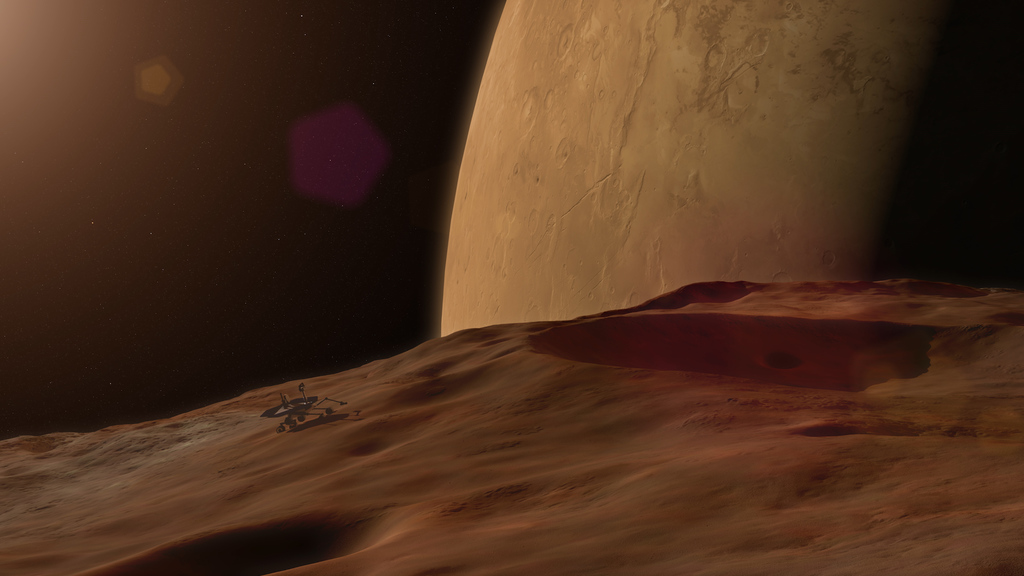The Moons Of Mars
Mars is kept company by two cratered moons—an inner moon named Phobos and an outer moon named Deimos. On August 1, 2013, NASA’s Curiosity rover pointed its telephoto lens toward the Martian heavens and recorded a series of night sky images that show the irregularly shaped moons crossing paths. Phobos, the larger of the two, circles the Red Planet about every eight hours from an average distance of 3,700 miles. Deimos is located farther away—approximately 12,500 miles—and completes one orbit every 30 hours. In comparison to Earth's moon, the moons of Mars are much smaller and placed in closer proximity to their planetary companion. For example, it would take Apollo astronauts three days to travel 238,000 miles from Earth to the moon. A similar journey from Mars to Phobos or Deimos would only take an hour or two. Watch the video to see a time-lapse view of Mars’ moons in motion.

Explore different views of the planet’s two natural satellites.
In this time-lapse video assembled from images taken by Curiosity, Phobos is seen passing in front of Deimos.

Phobos (above) has a mean radius of 6.9 miles. It is 150-times smaller than Earth's moon.

Deimos (above) has a mean radius of 3.9 miles. It is 280-times smaller than Earth's moon and about half the size of Phobos.

This illustration shows Earth's moon and the moons of Mars as they would appear to an observer on each planet.
Credits
Please give credit for this item to:
NASA's Goddard Space Flight Center
Video and moon comparison image courtesy of NASA/JPL-Caltech/Malin Space Science Systems/Texas A&M Univ.
Phobos and Deimos images courtesy of NASA/JPL-Caltech/University of Arizona
-
Video editor
- Kayvon Sharghi (USRA)
-
Writer
- Kayvon Sharghi (USRA)
Release date
This page was originally published on Tuesday, August 27, 2013.
This page was last updated on Monday, March 18, 2024 at 4:50 PM EDT.
